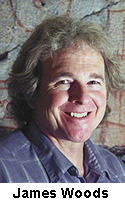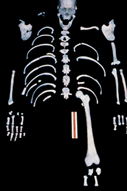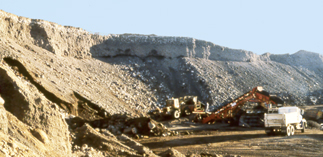
|
CONNECTIONS
|
IDAHO
ITD
HOME
IDAHO DMV
ITD
NEWS
HIGHWAY
SAFETY
IDAHO STATE
POLICE
TRAVEL SERVICES
STATE OF IDAHO
NATIONAL
AASHTO
AAMVA
AAA of IDAHO
FEDERAL HIGHWAYS
FEDERAL AVIATION
IDAHO STATE POLICE
NHTSA
NTSB
TRB
U.S. DOT
Idaho
Transportation
Department
Public Affairs Office
P.O. Box 7129
Boise, ID 83707
208.334.8005
Fax: 208.334.8563
Email

Archaeologist
to discuss history of 'Buhl Woman'
Wednesday at Headquarters' auditorium
A 1989 excavation project designed to harvest material for a highway project instead opened an archaeological door that had been closed for nearly 11,000 years.
 James
Woods, director of the Herrett Center for Arts and Science at the College
of Southern Idaho, will lead a journey back to the Paleoindian era Wednesday
at the ITD Headquarters in Boise. The Twin Falls archaeologist will
discuss the Buhl Woman discovery that shed new light on ancient inhabitants
of what now is southern Idaho.
James
Woods, director of the Herrett Center for Arts and Science at the College
of Southern Idaho, will lead a journey back to the Paleoindian era Wednesday
at the ITD Headquarters in Boise. The Twin Falls archaeologist will
discuss the Buhl Woman discovery that shed new light on ancient inhabitants
of what now is southern Idaho.
His presentation, from 2:30 p.m. to about 4 p.m., is open to ITD employees and the public. Woods will present slides and video of the archaeological dig near Buhl. The session is arranged by Sonna Lynn Fernandez of ITD’s Intermodal Planning section.
Highway workers discovered a skeleton of a woman – later to be called the Buhl Woman – while removing rock from a quarry near Buhl. Excavation ceased immediately as archaeologists searched for other skeletal remains and artifacts. It is considered one of the most important archaeological discoveries in Idaho in recent history.
“One of a handful of skeletons of its age known from the Americas, Buhl Woman is also one of the best preserved and most thoroughly studied,” according to Andrew L. Slayman in “Archaeology,” a publication of the Archaeological Institute of America.
 “A
team led by Thomas J. Green of the Arkansas Archaeological Survey analyzed
the skeleton, in consultation with the Shoshone-Bannock Tribes of Fort
Hall, before it was reburied in 1991. Bones were measured and photographed,
teeth cast, samples taken for radiocarbon dating and isotopic analysis,
and the geological context of the find recorded.”
“A
team led by Thomas J. Green of the Arkansas Archaeological Survey analyzed
the skeleton, in consultation with the Shoshone-Bannock Tribes of Fort
Hall, before it was reburied in 1991. Bones were measured and photographed,
teeth cast, samples taken for radiocarbon dating and isotopic analysis,
and the geological context of the find recorded.”
Scientific analysis of the teeth and bones suggest they were of a young woman (17 to 21 years), who lived about 10,675 (plus or minus 95) years ago. Her predominate diet probably was meat and some fish; food usually was cooked before being consumed.
“While Buhl Woman was basically healthy and the cause of her death was not apparent, defects in tooth enamel and bone development indicate periodic, perhaps seasonal, nutritional stress.”
In addition to the skeletal remains, an obsidian biface, part of a bone needle and other artifacts were found nearby. The accompanying artifacts suggest a “purposeful interment.”
Research indicates that humans moved into the Idaho area at the end of the ice age, about 12,000 years ago. They adapted to the region’s arid deserts and high mountain valleys. Their culture reveals a “remarkable statement of human ingenuity and adaptability to changing conditions and new challenges,” according to Woods.
 In
addition to his formal presentation on the Buhl Woman, Woods also offers
programs on Prehistoric Southern Idaho, Stone Tools and Weapons of Ancient
Idaho and Elephant Hunters of the Snake River Plain.
In
addition to his formal presentation on the Buhl Woman, Woods also offers
programs on Prehistoric Southern Idaho, Stone Tools and Weapons of Ancient
Idaho and Elephant Hunters of the Snake River Plain.
He worked with the late Don Crabtree, an internationally renowned figure in archaeology. He received his master’s degree from Idaho State University in 1987 and has published numerous papers on experimental archaeology. Woods has worked on several projects designed to learn more about the earliest inhabitants of the Great Basin.
He is a recipient of the Idaho Humanities Council’s award for Outstanding Achievement in the Humanities.
For more information about his presentation at ITD, contact Fernandez at 334-7823.
Published 3-31-06